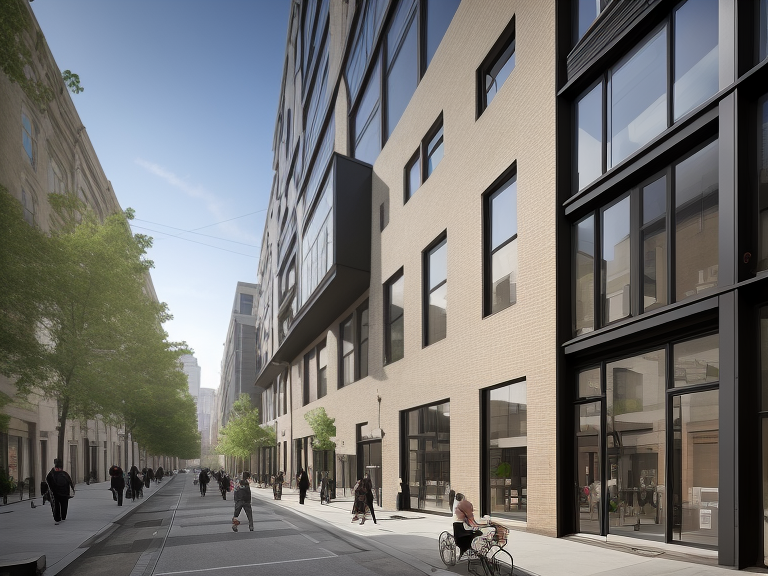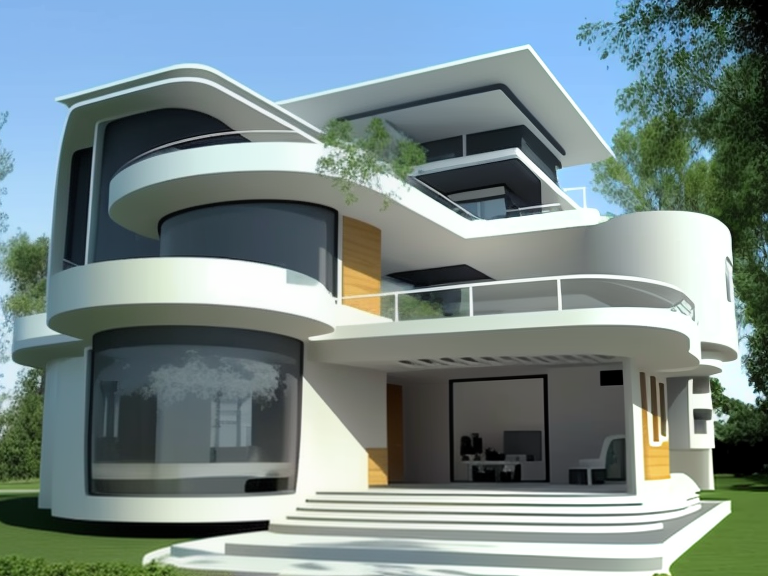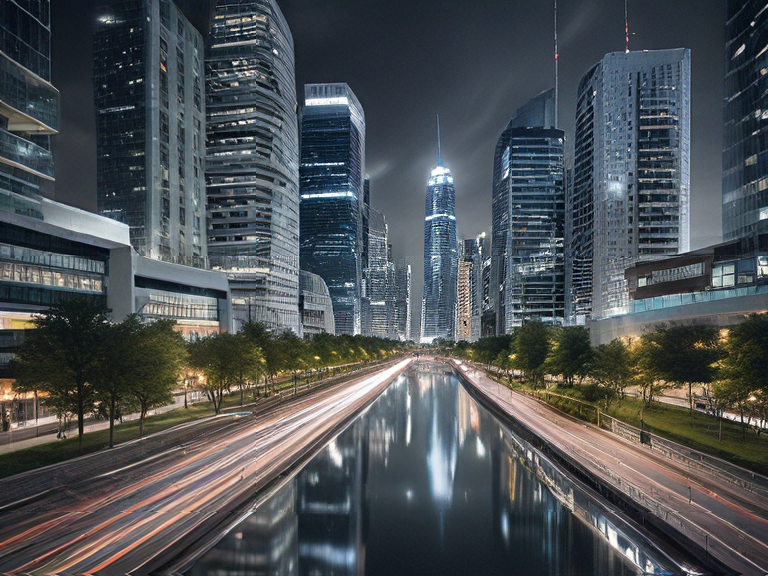Adaptive reuse is transforming urban landscapes by repurposing underutilized spaces, revitalizing neglected neighborhoods, and fostering community engagement. By redefining urban identity, these projects attract new businesses, create jobs, and promote spatial equity. Historic preservation meets innovation, blending past and present to create vibrant cultural hubs. Infrastructure upcycling reduces waste and benefits the environment. As cities adopt adaptive reuse strategies, they can unleash the full potential of their urban landscapes. From cultural revitalization to economic growth, the benefits are limitless – and we're only just beginning to uncover the possibilities.
Revitalizing Urban Landscapes Through Reuse
By repurposing underutilized or abandoned urban spaces, adaptive reuse projects can inject new life into neglected areas, fostering vibrant hubs of activity that redefine the urban landscape. This transformation not only revitalizes the physical environment but also reshapes the community's Urban Identity. As these projects take hold, they can reinvigorate the local economy, attract new businesses, and create jobs, ultimately redefining the urban experience.
Adaptive reuse projects also promote Spatial Equity by providing accessible and inclusive spaces that cater to diverse populations. By repurposing underutilized areas, these projects can address social and economic disparities, bridging the gap between marginalized communities and urban centers. This, in turn, fosters a sense of community and belonging, as residents from all walks of life come together to enjoy the revitalized spaces.
Breathing Life Into Industrial Relics
As cities evolve, they're left with remnants of their industrial past, standing as evidences to a bygone era. Breathing life into these relics not only preserves industrial heritage but also injects new energy into urban landscapes. By repurposing these structures, designers can strike a balance between honoring history and fostering vibrant community hubs.
Preserving Industrial Heritage
Industrial relics, once the backbone of urban economies, now stand as evidence of a bygone era, awaiting revitalization through innovative adaptive reuse strategies. These relics hold the key to preserving industrial heritage, an essential component of a city's cultural identity. By repurposing these structures, cities can breathe new life into their industrial legacy, honoring the past while forging a path towards a sustainable future.
The preservation of industrial heritage is pivotal in maintaining a city's unique character. Adaptive reuse allows cities to retain the historical significance of these structures while injecting new vitality into the urban fabric. This approach not only celebrates the cultural identity of a city but also fosters a sense of community and continuity. By preserving industrial relics, cities can create vibrant public spaces that pay homage to their industrial past while catering to the needs of a modern, thriving community.
Revitalizing Urban Landscapes
Through innovative adaptive reuse, cities can harness the potential of abandoned factories, warehouses, and other relics to transform them into thriving hubs of activity, injecting vibrancy into urban landscapes and reinvigorating the city's economic and social fabric. This revitalization breathes new life into once-neglected areas, fostering a renewed sense of urban identity and community pride. As cities adapt and repurpose these industrial relics, they're not only preserving history but also creating vibrant public spaces that attract businesses, residents, and visitors alike. This, in turn, bolsters city resilience by diversifying the local economy, enhancing quality of life, and promoting sustainable growth. By embracing adaptive reuse, cities can reclaim underutilized spaces, reduce urban sprawl, and forge a stronger, more resilient urban identity. As a result, cities can tap into new opportunities for innovation, entrepreneurship, and cultural expression, ultimately becoming more attractive, livable, and competitive on the global stage.
Transforming Obsolete Infrastructure
Cities are repurposing outdated infrastructure to revitalize urban landscapes, breathing new life into abandoned relics of the past. This innovative approach, known as infrastructure upcycling, transforms decaying infrastructure into vibrant public spaces, fostering community engagement and economic growth. Urban archaeology, the process of uncovering and preserving historical remnants, plays a vital role in this transformation. By excavating and incorporating existing structures, cities can reduce waste, preserve history, and create unique urban experiences.
Infrastructure upcycling also offers a sustainable solution to urban development. Instead of demolishing and rebuilding, cities can repurpose existing infrastructure, reducing construction waste and the environmental impact of new materials. This approach not only benefits the environment but also preserves the cultural heritage of urban landscapes. As cities evolve, infrastructure upcycling enables them to adapt and transform, rather than erasing the past. By embracing this innovative approach, cities can utilize the potential of their underutilized infrastructure, creating thriving public spaces that honor their history while embracing progress.
Preserving History, Fostering Innovation
As cities evolve, preserving historic fabric becomes essential to maintaining cultural identity. By repurposing old buildings, innovative spaces can emerge, blending past and present. This fusion of heritage and innovation can revitalize urban landscapes, sparking new life into forgotten areas.
Historic Fabric Preservation
Preservationists and urban planners alike recognize the importance of preserving historic fabric as a means of fostering innovation and community identity. By maintaining the architectural integrity of historic buildings, cities can preserve their cultural significance and create a sense of continuity with the past. This approach allows for the retention of irreplaceable historical assets, which can serve as a foundation for urban renewal and revitalization.
Moreover, preserving historic fabric can spark innovation by providing a unique canvas for creative expression. By respecting the original character of historic buildings, developers can create vibrant public spaces that celebrate the city's heritage. This approach encourages the coexistence of old and new, allowing cities to evolve while still honoring their roots. By doing so, cities can foster a strong sense of community identity, which is essential for attracting businesses, talent, and investment. Ultimately, historic fabric preservation is a key component of adaptive reuse, as it allows cities to build upon their rich cultural heritage while embracing innovation and progress.
Innovative Space Creation
Through the artful integration of modern amenities and historic architecture, innovative spaces emerge, where preserved relics of the past converge with cutting-edge design to foster creative expression and community engagement. This fusion of old and new gives rise to unique environments that inspire and energize. By blending the authenticity of historic structures with modern functionality, adaptive reuse projects create spaces that are both nostalgic and forward-thinking.
Here are three key benefits of innovative space creation:
- Flexibility and adaptability: Flexible layouts and virtual workspaces enable occupants to tailor their environments to suit their needs, promoting collaboration and innovation.
- Community engagement: Adaptive reuse projects often incorporate public spaces, fostering a sense of community and social connection among occupants and neighbors.
- Economic revitalization: By transforming underutilized historic sites, these projects can inject new life into local economies, attracting businesses, talent, and investment.
Innovative space creation is a hallmark of successful adaptive reuse, where the boundaries of history and innovation are blurred to create vibrant, dynamic environments that inspire and empower.
Cultural Heritage Revival
Reviving cultural heritage sites breathes new life into historic urban landscapes, fostering a sense of continuity between past and present. This cultural heritage revival not only preserves history but also drives innovation, making it an essential aspect of adaptive reuse in urban design. By revitalizing historic sites, cities can reclaim their cultural identity and create vibrant public spaces that attract tourists and locals alike.
Museum revitalization is a key aspect of cultural heritage revival. By restoring and repurposing historic buildings, cities can create unique cultural institutions that showcase their rich history. For instance, a former industrial site can be transformed into a thriving art museum, featuring local artists and artisans. This not only preserves the site's history but also fosters a sense of community and creativity.
Artisanal revival is another critical component of cultural heritage revival. By supporting local artisans and craftspeople, cities can preserve traditional skills and techniques, while also promoting economic growth and development. This fusion of past and present creates a dynamic, thriving cultural landscape that honors the city's heritage while embracing innovation and progress.
Creative Placemaking in Urban Spaces
Urban designers and artists collaborate to craft vibrant public spaces that foster community engagement and social interaction. This synergy gives birth to creative placemaking, a transformative approach to urban design that revitalizes public spaces, strengthens local economies, and celebrates urban identity. By integrating public art, cultural programming, and community-driven initiatives, creative placemaking ignites a sense of community pride and belonging.
Here are three ways creative placemaking is reshaping urban spaces:
- Public Art as Urban Identity: Murals, sculptures, and installations become symbols of a city's unique character, reflecting its history, culture, and values.
- Community Engagement Platforms: Public spaces are reimagined as vibrant hubs for social interaction, fostering connections and a sense of community among residents and visitors alike.
- Cultural Programming and Events: Festivals, performances, and cultural activities bring people together, celebrate diversity, and inject new life into underutilized spaces.
Through creative placemaking, cities can reclaim underutilized areas, promote social cohesion, and forge a strong sense of urban identity. By harnessing the power of art, culture, and community engagement, urban designers and artists can create thriving public spaces that reflect the soul of a city.
Sustainability in Urban Design
Cities' pursuit of sustainability in urban design is driven by the imperative to minimize environmental footprint while maximizing the quality of life for citizens. As the world grapples with climate change, urban planners and architects are turning to innovative solutions to create eco-friendly cities of the future. At the forefront of this movement is the integration of green infrastructure, which not only mitigates the urban heat island effect but also enhances biodiversity and air quality.
Eco-friendly architecture is also gaining traction, with buildings designed to harness natural light, reduce energy consumption, and utilize sustainable materials. This shift towards sustainable urban design is crucial, as it's estimated that cities consume over 75% of the world's energy and produce 70% of global greenhouse gas emissions. By incorporating green roofs, rain gardens, and permeable pavements, cities can diminish their environmental impact while creating vibrant public spaces that foster community engagement.
Sustainable urban design is no longer a nicety, but a necessity. As cities continue to grow and evolve, it's vital that urban planners prioritize sustainability to secure a livable future for generations to come. By embracing green infrastructure and eco-friendly architecture, cities can become beacons of sustainability, setting a new standard for urban development worldwide.
The Economics of Adaptive Reuse
When it comes to the economics of adaptive reuse, developers and policymakers must weigh the financial pros and cons of revitalizing existing buildings versus constructing new ones. A thorough cost-benefit analysis helps identify the most viable projects, taking into account factors such as renovation expenses, potential rental income, and long-term property values. Additionally, tax incentives can play an important role in offsetting costs and making adaptive reuse projects more attractive to investors.
Cost-Benefit Analysis
Frequently, the feasibility of adaptive reuse projects hinges on a meticulous cost-benefit analysis that weighs the economic benefits of revitalizing a historic building against the costs of renovation and maintenance. This financial tradeoff is critical in determining the economic feasibility of a project. Developers and stakeholders must carefully consider the expenses associated with adaptive reuse, including the costs of acquisition, renovation, and ongoing maintenance.
In conducting a cost-benefit analysis, several key factors come into play:
- Initial investment costs: The upfront costs of purchasing and renovating the building.
- Ongoing maintenance costs: The expenses associated with maintaining the building over time.
- Potential revenue streams: The income generated through leasing or selling the renovated space.
Tax Incentives
Government agencies and private investors often offer tax incentives to stimulate adaptive reuse projects, recognizing the economic and cultural benefits they bring to urban communities. These incentives can have a substantial impact on the viability of a project, making it more attractive to developers and investors. By offering tax breaks, governments can encourage investment in underutilized or historic buildings, fostering urban renewal and revitalization.
Effective fiscal policy can play an important role in promoting adaptive reuse. By providing targeted tax incentives, governments can create an attractive investment environment, stimulating private sector investment and job creation. Strategic investment strategies, such as tax increment financing, can also be employed to support adaptive reuse projects, leveraging future tax revenues to fund current development costs.
Community Engagement and Activation
Through inclusive and participatory processes, urban designers can effectively engage local communities in the adaptive reuse of underutilized spaces, fostering a sense of ownership and responsibility among residents. This community-centric approach is essential in ensuring that revitalized spaces align with the needs and aspirations of the people they serve.
Effective community engagement and activation involve more than just tokenistic public meetings. They require a genuine commitment to listening to and incorporating community voices. Here are three key strategies for achieving meaningful community engagement:
- Inclusive public outreach: Urban designers must go beyond traditional public meetings and engage with diverse stakeholders, including marginalized groups, through targeted outreach and culturally sensitive communication.
- Co-creation and collaboration: Community members should be empowered to co-create solutions and participate in decision-making processes, ensuring that their voices are heard and valued.
- Ongoing community activation: Revitalized spaces should be designed to accommodate ongoing community programming and events, fostering a sense of community and encouraging continued civic engagement.
Designing for Dynamic Urban Environments
As urban environments continue to evolve, adaptive reuse projects must be designed to accommodate dynamic changes in population demographics, technological advancements, and shifting community needs. This necessitates a deep understanding of the complexities inherent in urban ecosystems, where adaptability and responsiveness are essential for long-term success. By prioritizing the adaptive reuse of old buildings, cities can preserve their architectural heritage while meeting contemporary demands for housing, workspaces, and public amenities. This approach not only reduces environmental impact by minimizing construction waste but also fosters vibrant, mixed-use communities that can evolve alongside societal changes. Ultimately, sustainable urban development depends on innovative design strategies that balance historical preservation with modern functionality.
Designing for dynamic urban environments demands a forward-thinking approach, one that prioritizes urban resilience and dynamic density. By incorporating flexible and modular design elements, adaptive reuse projects can respond effectively to changing urban circumstances. This might involve incorporating modular building technologies, adaptable floor plans, and innovative material applications.
Moreover, designers must consider the interplay between physical infrastructure and social systems, acknowledging the intricate relationships between urban form, function, and community well-being. By doing so, they can create vibrant, responsive, and sustainable urban environments that support the diverse needs of urban inhabitants. Adaptive reuse projects become catalysts for urban resilience, fostering dynamic density that is adaptable, inclusive, and resilient.
Urban Renewal Through Adaptive Reuse
By revitalizing underutilized or abandoned sites, adaptive reuse projects can become powerful catalysts for urban renewal, breathing new life into neglected neighborhoods and stimulating local economies. These projects not only transform physical spaces but also foster community pride and a sense of ownership among residents. Urban pioneers, who often spearhead adaptive reuse initiatives, play an important role in revitalizing urban areas and creating vibrant hubs of activity.
Here are three key benefits of urban renewal through adaptive reuse:
- Economic growth: Adaptive reuse projects can attract new businesses, create jobs, and increase property values, ultimately boosting local economies.
- Community engagement: By repurposing underutilized sites, adaptive reuse projects can create community spaces that foster social connections, cultural exchange, and a sense of community pride.
- Sustainable development: Adaptive reuse projects reduce waste, preserve historic buildings, and promote sustainable urban development, making them an attractive option for environmentally conscious cities.
Frequently Asked Questions
What Are the Environmental Benefits of Adaptive Reuse in Urban Design?
She recognizes that adaptive reuse in urban design offers significant environmental benefits. By repurposing existing structures, developers can drastically reduce the carbon footprint of new construction projects. This sustainable revitalization approach conserves resources, minimizes waste, and preserves historic character. As a result, urban landscapes are transformed while reducing the strain on the environment. This forward-thinking approach empowers cities to thrive while mitigating their ecological impact.
Can Historic Buildings Be Adapted for Modern Residential Use?
She contends that historic buildings can indeed be adapted for modern residential use, preserving heritage while catering to modern tastes. By repurposing iconic structures, developers can create unique Heritage apartments that blend nostalgic charm with modern amenities. This approach also supports Urban densification, allowing cities to grow upward while preserving their cultural identity. It's a win-win for residents, developers, and the environment.
How Does Adaptive Reuse Impact Local Property Values?
She notes that adaptive reuse greatly boosts local property values, sparking neighborhood revitalization. By transforming neglected buildings into vibrant hubs, property appreciation increases, attracting new businesses and residents. This, in turn, fuels economic growth, making the area more desirable. As a result, local property values surge, and the community flourishes.
Are There Any Tax Incentives for Adaptive Reuse Projects?
As a master weaver revives a tattered tapestry, cities can revitalize their forgotten corners. Are there any tax incentives for adaptive reuse projects? Yes, the government offers a financial boost to breathe new life into decaying structures. Incentive packages, such as historic tax credits and property tax abatements, sweeten the deal for developers, making adaptive reuse a lucrative endeavor. By embracing these incentives, cities can transform neglected areas into vibrant hubs of activity, sparking economic growth and community revitalization.
Can Adaptive Reuse Be Applied to Non-Industrial Heritage Sites?
She confirms that adaptive reuse can be successfully applied to non-industrial heritage sites, such as historic landmarks, monuments, and cultural institutions. It requires cultural sensitivity, ensuring that the site's original character is preserved. Effective landmark preservation involves community engagement and site restoration that honors the site's heritage. By doing so, heritage conservation is guaranteed, and the site's historical significance is maintained, ultimately enriching the community.



